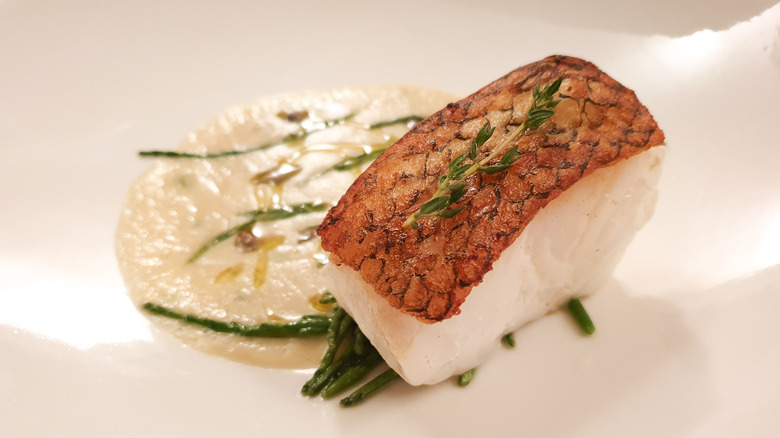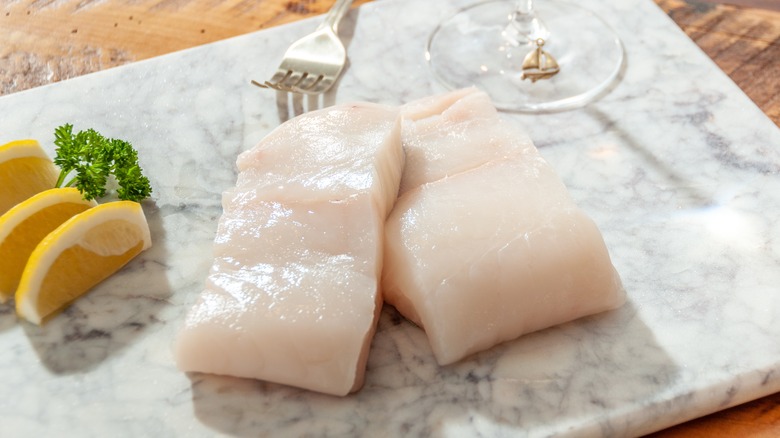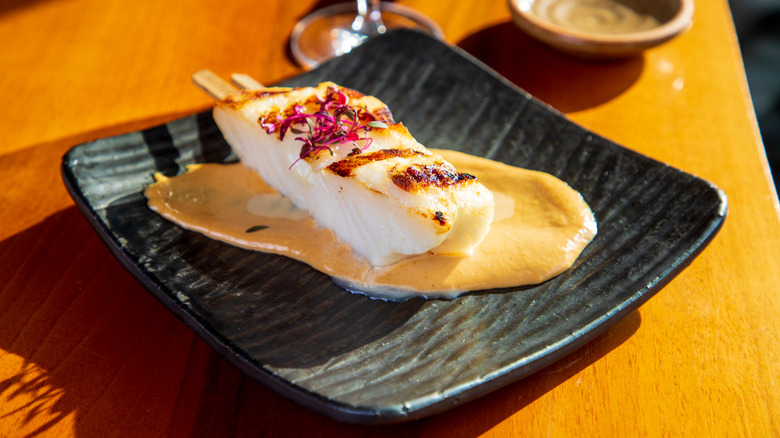The Unfortunate Reason Chilean Sea Bass Is So Expensive
These days, fish prices are all across the board, from canned sardines at a couple of bucks to Atlantic salmon at about $15 per pound and bluefin tuna at $5000 per pound. Chilean sea bass falls somewhere in the middle of the scale, costing about $30 per pound, if not more.
Unfortunately, like many fish species, the Chilean sea bass's price largely reflects its survival status. After a feature in the 1993 movie "Jurassic Park," Chilean sea bass was heavily overfished. To make matters worse, these fish don't reach reproductive maturity until 10-12 years of age, so they can't replenish their numbers as quickly as other species.
In 2002, countless chefs boycotted serving the species in hopes of its numbers bouncing back but the issue of illegal fishing remains. According to the U.S. Department of State, experts estimate that twice as many fish are harvested illegally as compared to legally, likely equating to around 60,000 metric tons of poached fish every year.
Chilean sea bass prices escalate even further
Beyond the delicate balance of supply and demand, the price of Chilean sea bass also increases to account for transportation. Even if the fish are being raised and harvested in fisheries, these fisheries perform best out at sea rather than close to shore. Meanwhile, wild-caught Chilean sea bass frequently comes from the seas surrounding Antarctica.
The most common fishing method, trawling, involves dragging a massive net along the ocean floor to catch the fish. As you can imagine, trawling can't target solely Chilean sea bass, so this method accounts for about 46% of annual discards, representing more than 430 million tons of seafood wasted. As such, trawling is an expensive process to maintain with disturbingly little success to show for it.
After such a time-consuming harvest and transportation back to shore, prices have already been adjusted to account for labor and fuel. Tack on at least 7,000 more miles to reach the fish's final destination and it's no wonder a restaurant might charge nearly $50 for a filet.
Customers are still paying for Chilean sea bass
Despite Chilean sea bass's often hefty price tag, many customers continue to pay for the experience. Whether cooked at a restaurant or used in a Chilean sea bass and garlic butter recipe at home, this fish offers a very tender and flakey texture that melts in your mouth. Because it has a buttery, almost nutty taste, Chilean sea bass pairs with countless flavors from lemongrass to ricotta cheese.
In terms of nutrition, Chilean sea bass has 24 grams of protein and 125 calories per serving but it also contains elevated mercury levels. Therefore, the U.S. EPA recommends that adults consume no more than two servings per month and children no more than one serving. According to the Cleveland Clinic, mercury poisoning side effects may include a burning sensation in the digestive tract, nausea, and blood in vomit. Couple these possible symptoms with the high price per pound and Chilean sea bass might lose some of its appeal.



